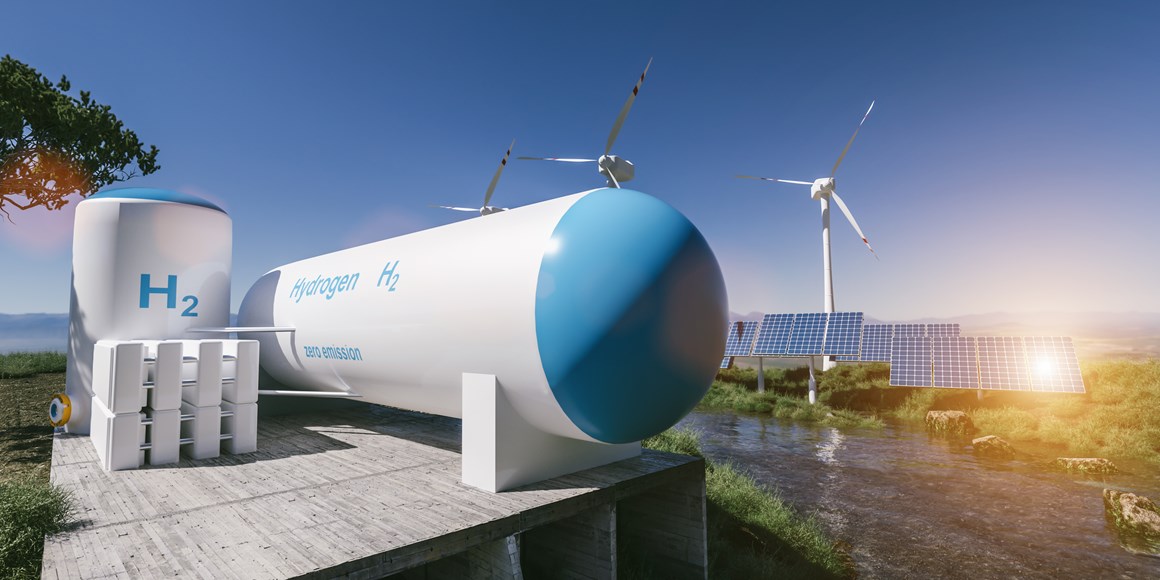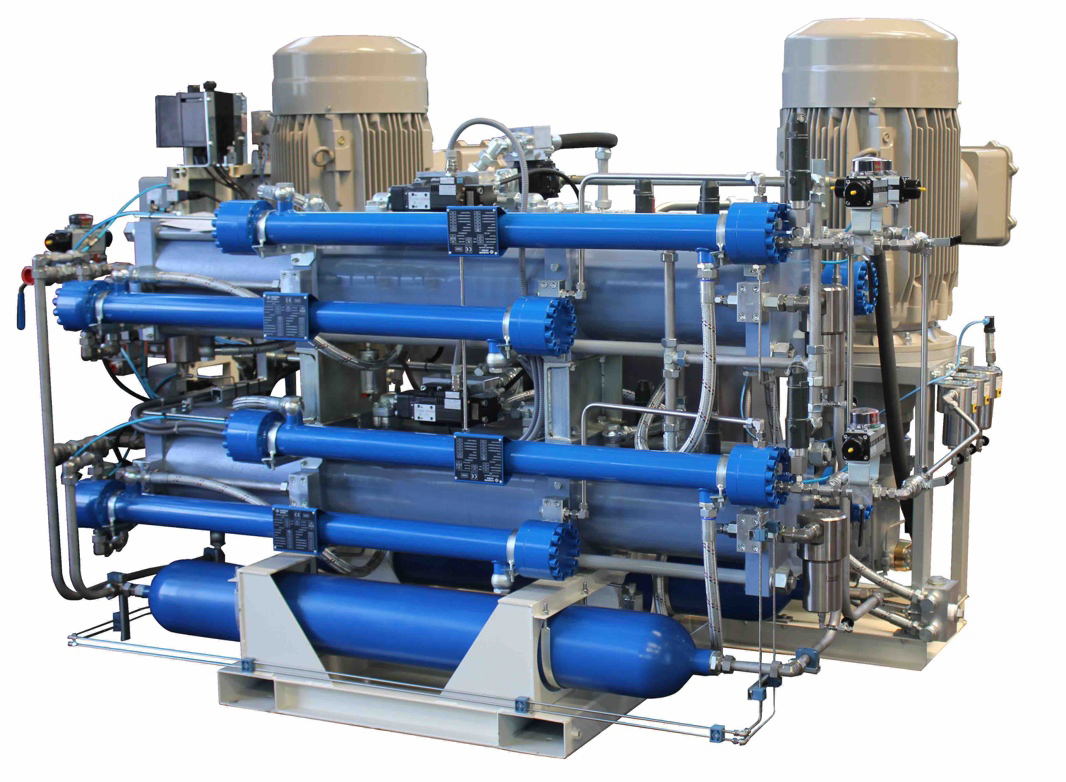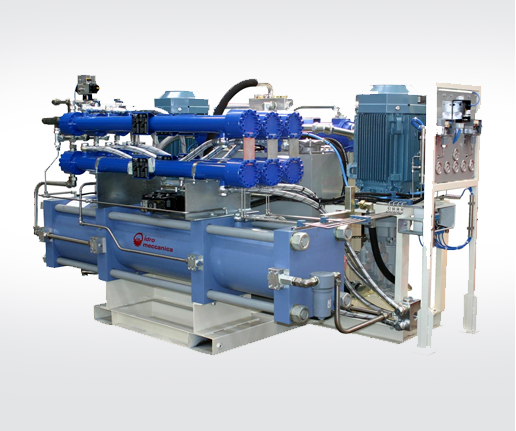
How to Unlock the Power of Fuel Cell Compressors
Fuel cell compressors are a revolutionary technology that you need to know about! Unlocking their power can seem daunting, but with the right knowledge it's totally doable. (First), knowing what fuel cells are is key. They're devices that convert chemical energy from combustible fuels into electricity, and they have been used in many industries for decades. Another important aspect of understanding fuel cell compressors is learning how they work. Basically, these machines use compressed air to create an electrochemical reaction between the fuel and oxidant molecules. This reaction produces heat which then powers a generator to produce electricity. It's an efficient process that can generate large amounts of electrical power without producing harmful emissions! Now that we understand the basics of fuel cell compressors, let's look at ways to unlock their power. The first step is to properly size the compressor for your needs - if it's too small, it won't be able to generate sufficient electricity; if it's too large, you'll end up wasting money on unnecessary equipment. It's also essential to monitor the performance of your compressor regularly so you can identify any issues before they become major problems.
read more
History and Development of Hydrogen Compressors
Hydrogen compressors have come a long way! Developed in the late 19th century, they've seen much improvement and innovation over the years. Initially (hydrogen compressors) were used to store hydrogen gas for industrial purposes, but soon (their uses) expanded. After World War II, these machines began to be used for a variety of applications such as powering vehicles and nuclear energy plants. Moreover, technological advancements have allowed for further development of hydrogen compressors . For example, now they can be used in combination with other technologies such as fuel cells and electrolysis. This has made them more efficient and reliable than ever before! In addition, several safety measures have been implemented to ensure that the process is safe and secure. In spite of this progress, however, challenges still remain when it comes to the storage of hydrogen gas. Different types of materials are needed to contain it properly and safely; thus complicating its use in certain contexts. Furthermore, there exists much research that needs to be done on how best to transport this element from one place to another without risking leakage or contamination. All things considered though, it's clear
read more
Electric driven gas compressor
March 28, 2023 — a new hydrogen compressor developed at southwest research institute (swri) can improve the efficiency and reliability of hydrogen compression used in the refueling of fuel cell electric vehicles (fcevs). The swri-developed linear motor-driven reciprocating compressor (lmrc) is designed to compress hydrogen as a fuel source for fcevs and other hydrogen-powered vehicles. Unlike most hydrogen compressors, swri’s lmrc is hermetically sealed and has a linear motor design that increases its efficiency and reliability. “the lmrc was built and designed to compress hydrogen for refueling vehicles with hydrogen fuel cells,” said swri principal engineer eugene broerman, the project’s lead investigator. We offer a wide variety and types of compressors. You can install these in many different scenarios. It is possible to install the compressors in hydrogen houses between and electrolyser and a storage system, in businesses to support their needs such as ice cream companies for hydrogenation, at farmers where they use it to produce ammonia or as a fuel at the back of a wind farm or solar farm, and refineries to pressurise the hydrogen before it is being used to clean up the gas or oil. There are also many applications for our h2 compressors. For instance,
read more
Why are hydrogen compressors important for refuelling?
For more than 20 years, sundyne’s compressors and pumps have played an important role in the production, transportation and distribution of hydrogen around the globe. Sundyne’s ppi compressors are specifically designed to address the challenges associated with compressing h2 from low pressure levels (such as electrolyser outlet pressure) up to the 350 or 700 bar levels that are required by today’s vehicles that run on hydrogen. The centrifugal integrally-geared compressors in the lmc/bmc/lf-2000 series are engineered to optimize the efficiency of hydrogen compression for energy, petrochemical, chemical and industrial businesses. Available from 100 to 17,000 m3/hr, these compressors are a preferred choice for h2 gas applications. The quality of hydrogen fuel, used in hydrogen powered cars, trucks, buses and other hydrogen fuel cell vehicles, is critical for proper operation of the fuel cells. Contaminants originating in the hydrogen supply can damage fuel cells, therefore it is critical that purity is effectively managed during the hydrogen refuelling processes to reduce the risk. Haskel’s full range of hydrogen compressors are designed specifically to prevent any cross contamination of the gas to ensure that gas purity is maintained throughout the refuelling process. Read more in our blog - maintaining
read more
Reciprocating piston compressors [ edit ]
Hydrogen is typically produced at relatively low pressures (20–30 bar) and must be compressed prior to transport. Most compressors used today for gaseous hydrogen compression are either positive displacement compressors or centrifugal compressors. Positive displacement compressors can be reciprocating or rotary. Reciprocating compressors use a motor with a linear drive to move a piston or a diaphragm back and forth. This motion compresses the hydrogen by reducing the volume it occupies. Reciprocating compressors, sometimes called recips for short, are the most commonly used compressor for applications that require a very high compression ratio. 1rotary compressors compress through the rotation of gears, lobes, screws, vanes, or rollers. There are six different type of hydrogen compressors that are widely used in the hydrogen economy. Reciprocating compressors: in a reciprocating hydrogen compressor, a piston or plunger compresses the hydrogen gas. As the piston or plunger moves back and forth, it increases the pressure of the hydrogen gas by reducing its volume. A reciprocating hydrogen compressor is typically used for low- to medium-pressure applications and are known for their high efficiency and durability. Centrifugal compressors: in a centrifugal hydrogen compressor, a spinning impeller compresses the hydrogen gas. As the impeller
read more
Compressor vs pump [ edit ]
Device to increase pressure of hydrogen gas a hydrogen compressor is a device that increases the pressure of hydrogen by reducing its volume resulting in compressed hydrogen or liquid hydrogen. Traditionally, applications for hydrogen compressors included chlorine electrolyser and many chemical applications like the production of hydrogen peroxide (hppo). The newer applications related to green and environmentally friendly technologies include fuel cells and electrolysis for hydrogen production. Compressor vs pump[ edit ] hydrogen compressors are closely related to hydrogen pumps and gas compressors : both increase the pressure on a fluid and both can transport the fluid through a pipe. As gases are compressible, the compressor also reduces the volume of hydrogen gas, whereas the main result of a pump raising the pressure of a liquid is to allow the liquid hydrogen to be transported elsewhere. See also [ edit ] This page was last edited on 13 march 2024, at 04:07 (utc). Text is available under the creative commons attribution-sharealike license 4. 0 ; additional terms may apply. By using this site, you agree to the terms of use and privacy policy. Wikipedia® is a registered trademark of the wikimedia foundation, inc. , a non-profit organization. Privacy policy. Notice:
read more